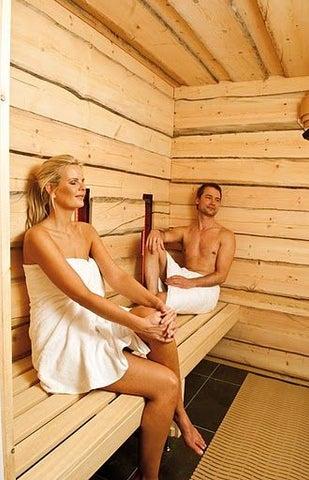The smart Trick of Traditional Sauna That Nobody is Talking About
Traditional Sauna Fundamentals Explained
Table of Contents8 Simple Techniques For Traditional SaunaAn Unbiased View of Traditional SaunaTraditional Sauna - TruthsNot known Details About Traditional Sauna The 25-Second Trick For Traditional Sauna
Most of the weight lost in a sauna is water loss and is re-gained upon rehydrating. Without a doubt sauna can be an essential component of a healthy weight loss program. To check out the differences in between standard and IR saunas, I will separate these into verifiable, theoretical, and produced distinctions.Therefore, the hottest factor in the saunawhich is at the ceiling directly over the sauna heateris usually between 185 and 190 F. Claims that a traditional sauna goes beyond 200 F is just not true and not appropriate for electrical saunas marketed in the US. The temperature level for a far-infrared sauna is generally set between 120 and 140 F; however, unlike the conventional sauna, the goal in and IR room is not to accomplish a high temperature level.
Since of this, the temperature level difference is almost unnecessary, given that extreme sweating causes both sauna kinds, but the technique of warming the body is different. In an IR sauna the bather will really feel warm and will sweat a lot, yet at much reduced temperature levels (Traditional Sauna). Hence, if the objective is to spend longer periods of time in the sauna, the IR sauna is a great selection
When a standard sauna has been correctly heated, the sauna wall surfaces are warm, the air temperature level has attained established temperature and the rocks are extremely warmed. As an intriguing side note, the warmed wall surfaces and the rocks are giving off far-infrared heat, combined with the heated air, to produce an "enveloping heat".
The Ultimate Guide To Traditional Sauna

When the high temperature is achieved, the elements cycle on and off to maintain the heat. Most standard sauna users appreciate putting water over the rocks to develop heavy steam to raise sauna moisture levels. The advantages of putting water over the rocks consist of: making the space extra comfortable, dampening the nasal passages, and enabling the usage of aromatherapy by mixing important oils with the water.

When the power goes into the body, it creates the body temperature to raise and inevitably causes sweating. In an infrared sauna it is essential for the emitters/heaters to remain on nearly regularly. Since there is no mass of rocks to preserve warmth, the sauna will cool if the emitters turned off.
As mentioned above, the sauna bather in an infrared space wishes to position himself before operating emitters to obtain maximum take advantage of the warmth. The heating time for the 2 rooms can Source be really different, depending on how the rooms are utilized. For a standard sauna, a bather must allow 30-40 mins for the space to attain a preferred temperature and to effectively pre-heat the rocks.
Traditional Sauna Fundamentals Explained
A well built sauna will typically accomplish a temperature of 150-160 F in concerning 30-40 mins. For hotter temperature levels, the area may need to warmth for a longer period.

Standard saunas often tend to be larger (thus use even more electrical power) than infrared saunas, although typical saunas are certainly offered in one and two individual sizes also. For a two-person conventional sauna, 5x6 or 5x7 dimension is most popular. The top bench can conveniently seat two or three individuals and is also enough time to relax throughout the sauna session.
The Single Strategy To Use For Traditional Sauna
The average cost per kWH of electricity in the united state is around $0.11, so a 4.5 kW heater will cost approximately $.50 to compete one hour, if the heater runs continuously for one hour. Commonly you could check here a sauna heating system will certainly run for 75% of the initial hour and 50% of subsequent hours on given that Bonuses the aspects cycle once the set temperature level is achieved.

There is a seldom discussed difference in the social experience in between the 2 rooms. While our culture has lost several of the social advantage of the typical sauna experience, it can be very socially gratifying (Traditional Sauna). From family time in the sauna, to heart-felt conversations with significant others, to sauna partiesthe standard sauna experience can lead to intimate socializing
Things about Traditional Sauna
A lot of greater end infrared rooms include tinted light treatment, sound systems and full-glass fronts.